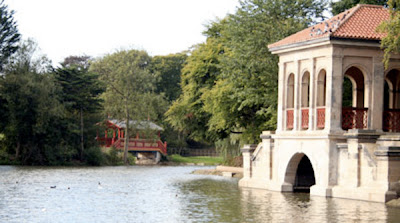Born in Hartford, Connecticut and raised by his father, unable to attend Yale College because his eyesight had weakened due to sumac poisoning, Frederick Law Olmsted sailed off to China where he returned a year later with scurvy. After recovering, he set out his hand at farming on Staten Island, failing miserably to profit from his land holdings. Next he embarked for England and Wales with his brother whereupon they encountered magnificent estates, parks and rural scenery. Such was the indication of things to come. Most influential in his journeys were Joseph Paxton’s design for Birkenhead.
Paxton sought to bring the grandeur of the aristocratic garden to the working people of Birkenhead. The park was a declaration of civic pride to nearby Liverpool and an attempt to tempt wealthy taxpayers to either build or purchase homes in Birkenhead. It is widely believed to be the first civic park in Britain, but more importantly within this context it provide the inspiration and template for Olmsted (and Calvert Vaux's) work. Olmsted wrote "
"five minutes of admiration, and a few more spent studying the manner in which art had been employed to obtain from nature so much beauty, and I was ready to admit that in democratic America there was nothing to be thought of as comparable with this People’s Garden"."


Illustration and photograph of Birkenhead Park (youyesterday.com/flicker.com)
“Olmsted was much impressed with the meandering footpaths and open meadows spangled with rocks and scattered trees. He wondered how cleverly "art had been employed to obtain from nature so much beauty." And wonder of wonders, this was not just a sanctum for some noble lord but a park open to the public, a park for people of all stations in life. In all the cities of democratic America, he had to admit, there was nothing quite like it. Not yet, anyway.” National Geographic Magazine, March 2005.

Illustration of Central Park/Bethesda Terrace and fountain
Much has been written on Olmsted’s intriguing life, including the most recent bestseller “A Clearing in the Distance”by Witold Rybczynski. Thanks to the efforts of the Olmsted Legacy a film that was initially screened last year at select locations will now be coming to public television.
The Olmsted Legacy, with its name slightly tweaked to "Olmsted and America's Urban Parks" was aired appropriately on PBS for Earth Day, April 20th.






























































